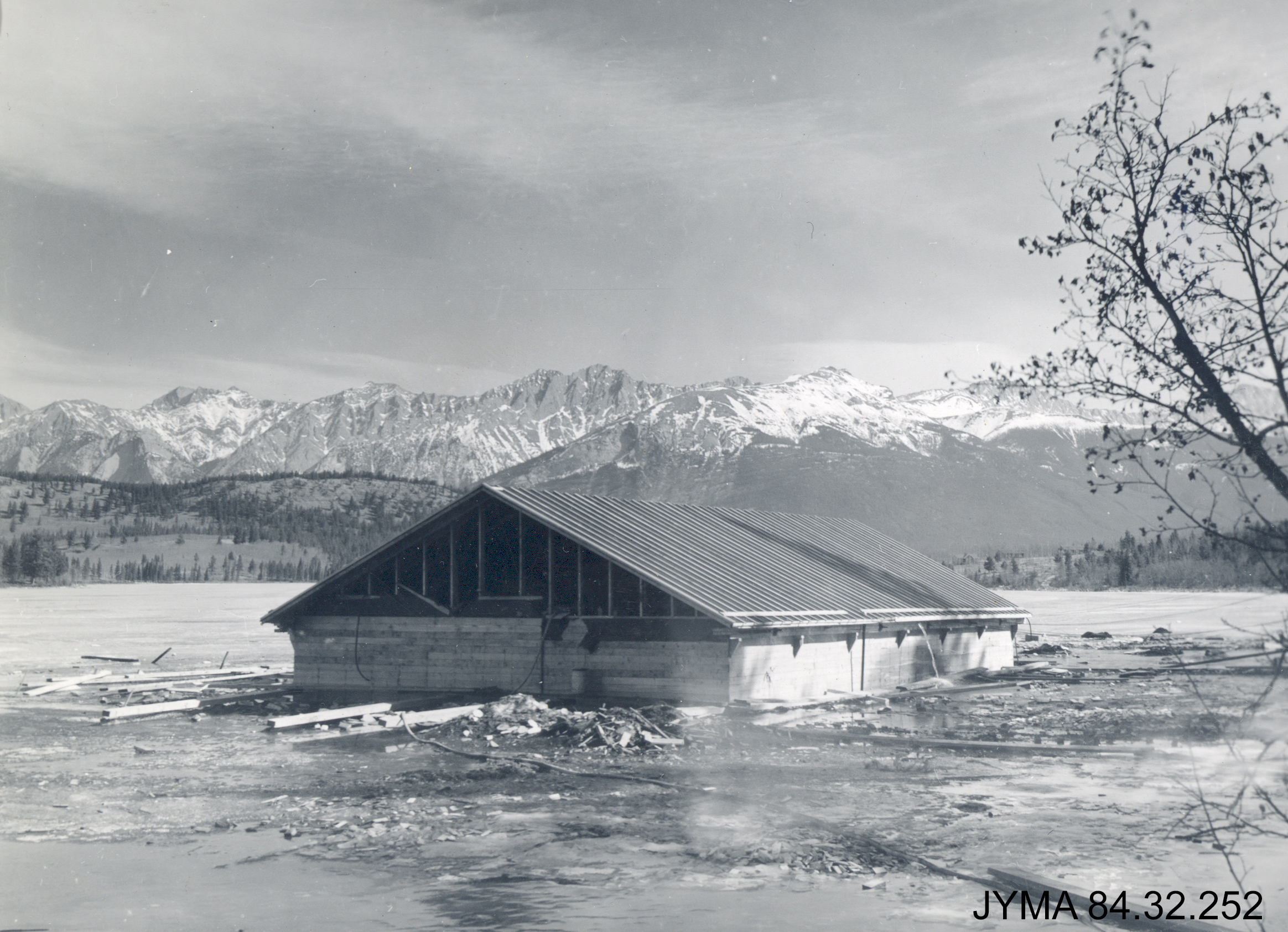Habbakuk
In 1943, the National Research Council coordinated the top-secret construction of Habbakuk, a 1-to-50-scale model ice and sawdust ship, to test the feasibility of protecting North Atlantic wartime shipping lanes with a fleet of massive, unsinkable aircraft carriers. Project Habbakuk in Jasper began with a heavily insulated wooden frame. Army personnel then added to its hull large blocks of ice mixed with sawdust (to add strength). On-board refrigeration units kept the ice from melting. The National Research Council proved that the ice-hulled ships were technically possible to build but the cost of material and labour to construct such ships made the concept impractical. Late in 1943, refrigeration equipment was removed from Habbakuk. Its resistant ice hull melted and the wooden superstructure of the ship sank to the bottom of Patricia Lake. A plaque at the shoreline, and a commemorative cairn on the bottom of Patricia Lake, near the wreck, explain the history of the project.






